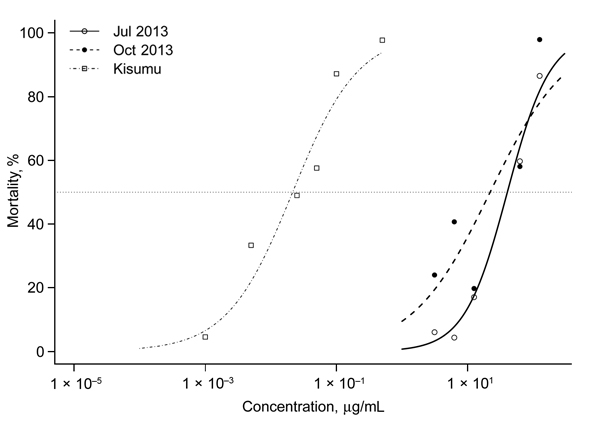Volume 20, Number 10—October 2014
Research
Increased Pyrethroid Resistance in Malaria Vectors and Decreased Bed Net Effectiveness, Burkina Faso
Figure 3

Figure 3. Dose-response curves for 3- to 5-day-old Anopheles gambiae VK7 female mosquitoes and Kisumu laboratory strain mosquitoes (insecticide-susceptible), Burkina Faso. Mosquitoes were exposed to different concentrations of deltamethrin in 250-mL glass bottles for 1 h. Dose-response curves were fitted to data by using a regression logistic model and R software (http://www.r-project.org/). Dotted line indicates 50% mortality rate. 50% lethality concentrations were 38.787 μg/mL (95% CI 32.993 μg/mL–46.062 μg/mL) in July 2013, 21.547 μg/mL (95% CI 15.771 μg/mL–31.223 μg/mL) in October 2013, and 0.021 μg/mL (95% CI 0.015 μ /mL–0.029 μg/mL) for the Kisumu strain.
Page created: September 12, 2014
Page updated: September 12, 2014
Page reviewed: September 12, 2014
The conclusions, findings, and opinions expressed by authors contributing to this journal do not necessarily reflect the official position of the U.S. Department of Health and Human Services, the Public Health Service, the Centers for Disease Control and Prevention, or the authors' affiliated institutions. Use of trade names is for identification only and does not imply endorsement by any of the groups named above.